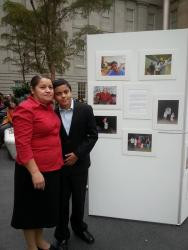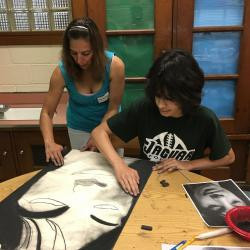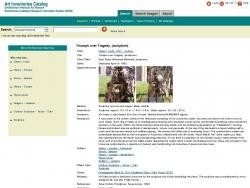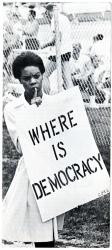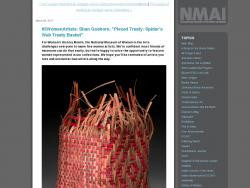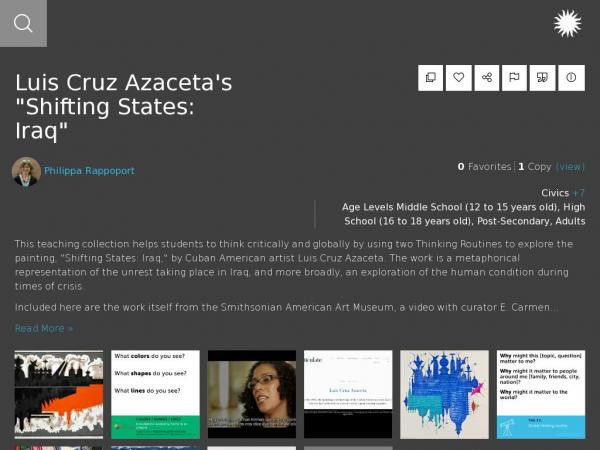Philippa Rappoport
I work in education and engagement, teacher professional development, and outreach at the Smithsonian Office of Educational Technology (OET), and have a particular interest in developing and producing trainings, programs, teaching techniques, and platforms that foster deep learning and contribute knowledge to improve practices in museum and preK-16 education and engagement. At OET over the last decade+, I created digital assets for schools, families, and new immigrant English Language learners to complement teacher professional development and pan-Smithsonian programming, including Learning Lab teaching collections, YouTube videos with tradition bearers, a handmade family stories book-making website, and online heritage tours.
Philippa Rappoport's collections
Carnival Celebrations: Masks (Lesson Plans, Activities, and Background Information)
 Philippa Rappoport
Philippa Rappoport
Student Activity: An Exploration of Immigration/Migration Experiences
 Philippa Rappoport
Philippa Rappoport
Classroom Activity Using Images of Immigration and Identity from the National Portrait Gallery, the New York Times, and the Smithsonian American Art Museum
 Philippa Rappoport
Philippa Rappoport
Engaging Families through Art and Technology Programs: "Illuminating the Self"
 Philippa Rappoport
Philippa Rappoport
Student Activity: Looking at the Holocaust through Art
 Philippa Rappoport
Philippa Rappoport
Irish Music
 Philippa Rappoport
Philippa Rappoport
"American Democracy: The Great Leap of Faith"
 Philippa Rappoport
Philippa Rappoport
The Social Power of Music
 Philippa Rappoport
Philippa Rappoport
Using Technology to Explore Our Nation’s Difficult Past
 Philippa Rappoport
Philippa Rappoport
Down These Mean Streets: Community and Place in Urban Photography
 Philippa Rappoport
Philippa Rappoport
From One Artist to Another: "Rudolfo Anaya" by Gaspar Enríquez
 Philippa Rappoport
Philippa Rappoport
Using Global Thinking Strategies with Latino Content
 Philippa Rappoport
Philippa Rappoport




